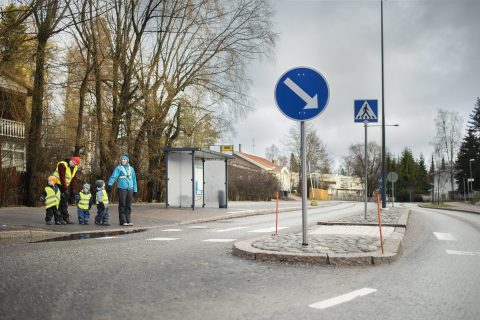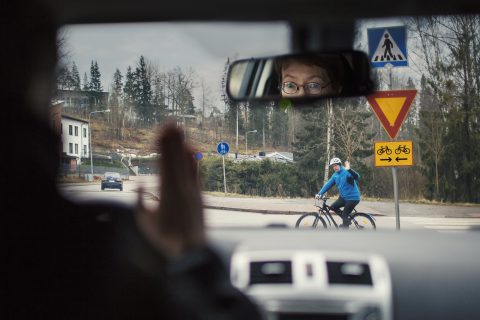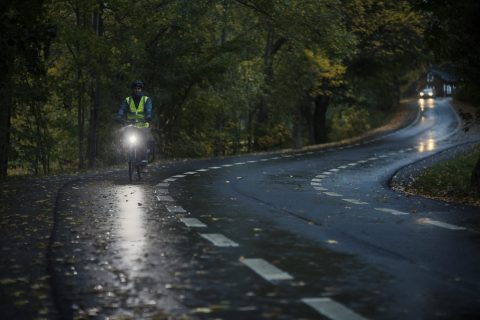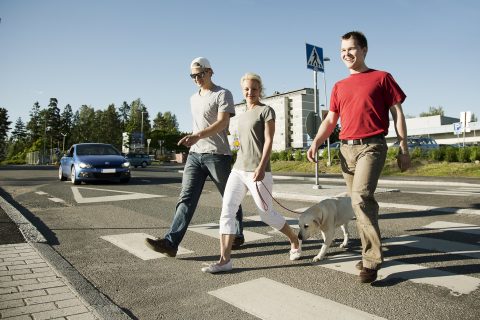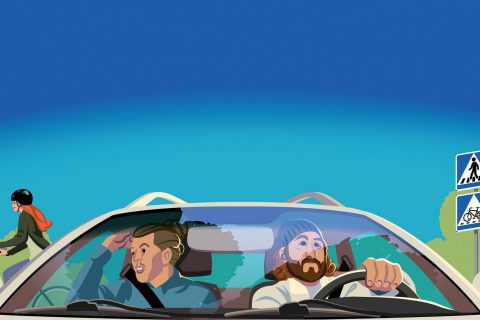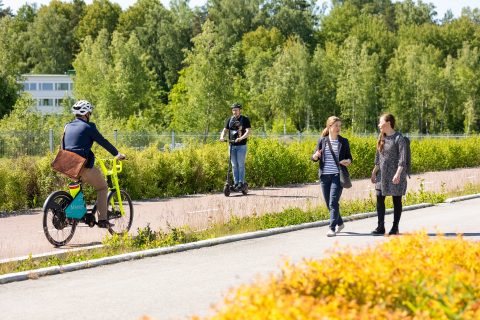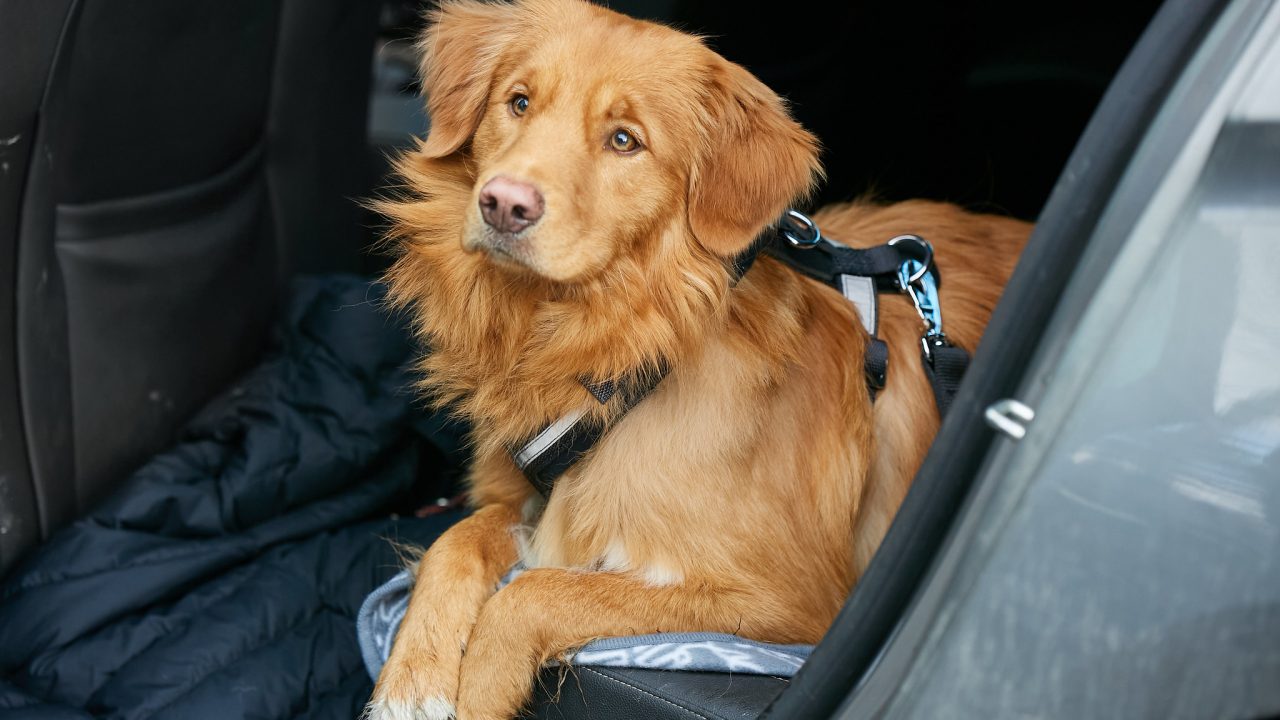
Keeping pets safe in cars and on the road
When travellling with pets it is important to make sure that they too are safe on the journey. In a car keeping your pet properly restrained will keep your pet, you and your passengers safe. Safe options are to use a pet seat belt or a safety harness attached to the car’s seat belt or a robust kennel or travel crate.
Secure you pet when travelling in a car
In a regular passenger car, pets usually travel in the cabin or in the back of the car. In the cabin dogs can be attached to the car’s seat belt with a seat belt / safety harness.
When selecting a harness make sure they are suitable for car use – then they are also designed to withstand crash situations. The law does not require testing for pet products, but some product manufacturers test the products themselves. Do not rely only on advertising, but assess the product’s strength from the user’s perspective. Look for wide and durable straps made from seat belt like material. The wide strap and harness structure distributes the impact over large areas, which improves the dog’s chances of surviving the crash. Prefer harnesses with metal buckles.
When the dog travels in the back of the car, a well-made, hard-sided kennel or travel crate specifically designed for transporting dogs is a way to secure your dog. Remember to attach the crate to the car, Select the crate so that i t is roomy enough for your dog to stand up, turn around, and lie down. Verify with the product manufacturer that the crate will protect your pet in case of an accident.
Dog harnesses suitable for car use are also designed to withstand crash situations.
Travel crates can be used in the cabin too to transport smaller animals. Remember to always attach the crate to the car.
Never transport a pet in the closed luggage compartment
Animal welfare must always be ensured when transporting pets. Dogs, or other animals, must not be transported in the closed luggage compartment of a passenger car.
The pet can travel in the luggage compartment with an open connection to the passenger compartment. For example, there is an open connection in vehicles with a combi body. Make sure that the dog cannot escape to the passenger compartment or from the vehicle when doors or windows are opened.
Unrestraining a pet can cause serious harm
Unrestrained pets can distract the driver and distracted driving can easily lead to an accident. In an accident or sudden stop an unrestrained pet can also be ejected from the car through the windshield or catapult over the seat and collide with the the driver or passengers. This can cause serious injury to both the pet and the humans.
The driver can not have the pet on their lap while driving.
At the scene of an accident
If you have an accident or arrive at the scene of an accident and there is a dog in the car:
- You must also help the dog.
- Remember that an animal may defend itself if it is injured. When a dog is in shock, it may bite even its owner. You can tie the dog’s mouth or use a muzzle to keep it from biting.
- Try to put the dog on a leash to prevent it from escaping.
- Ddogs and other pets are aided at the scene of an accident just like other occupants of the crash. Even if the dog’s owner cannot be reached, the dog must be treated as soon as possible by a veterinarian if injured.
What information about a dog should be kept in the car?
For example, the most important information about a dog travelling in a car can be recorded on a double-sided (laminated) note, which should be stored in an easily accessible location with the contact side facing down. Include in the note the following information:
- The dog’s official name and microchip identifier
- The dog’s date of birth
- The dog’s breed, identifying signs and any illnesses
- The personality of the dog, whether it is aggressive to strangers, etc.
- Contact information for ICE
Walking the dog
When walking with a dog or another pet take other road users into account. On a shared path for pedestrians and cyclists, you can walk your pet on either side of the path. The dog (or other pet) must be constantly under the control of its walker.
On roads outside of towns, the place of pedestrians is on the left side of the road, either on the shoulder or as close to it as possible. There, the safest way to move with a dog is with the dog on the side of the shoulder.
- Pay attention to other traffic and move along the edge of the path.
- Do not use flexi leashes on paths where other people are also moving.
- Teach the dog already as a puppy to calmly pass different road users and other dogs.
- Make sure your pet is visible at all times of the year.
Overtaking a dog walker
When you are passing a dog and its walker, make sure that you don’t surprise them. As a cyclist, roller skater or e-scooterist signal your intentions to overtake well in advance by ringing the bell or shouting out. Look over your shoulder before overtaking to make sure the road is clear. Slow down and pass others with a proper safety
distance.
If scared, the dog may rush towards the person overtaking. Safest is when both parties have noticed each other in good time. The dog walker can also tighten their grip, making sure that the dog is under control.
The walker of a small pet may also want to lift their pet up. When we anticipate encounters, it makes overtaking a more comfortable experience for everyone.
